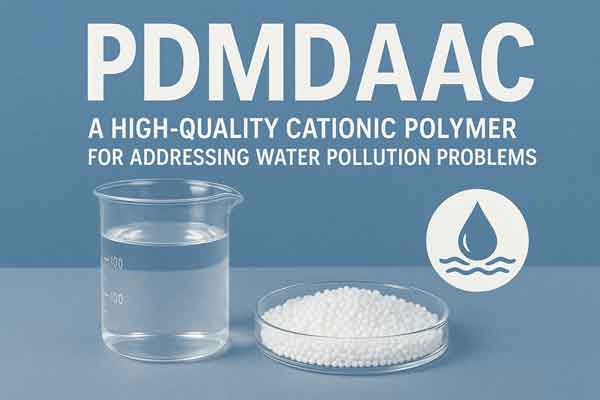Polydadmac – A High-Quality Cationic Polymer for Addressing Water Pollution Problems
Currently, global issues of water scarcity and water pollution are becoming increasingly severe. Finding efficient and environmentally friendly water treatment agents has become crucial for managing water environments. Among numerous water treatment agents, polydimethyldiallylammonium chloride (abbreviated as PDMDAAC) stands out due to its excellent performance. As a typical cationic polymer, it holds great potential in water purification.In terms of composition.

In terms of composition, Polydadmac is formed by the free radical polymerization of dimethyldiallylammonium chloride (DMDAAC) monomers and exists as a linear polymer compound. The abundant positively charged quaternary ammonium groups in its molecular structure are key to meeting the requirements for water purification.
Regarding physicochemical properties, Polydadmac is usually a colorless to pale yellow viscous liquid or solid powder with excellent water solubility. More importantly, it remains stable over a wide pH range of 2 to 11 and will not lose its activity due to changes in the acidity or alkalinity of water. It can function normally whether in acidic industrial wastewater or alkaline aquaculture water. Furthermore, its molecular weight can be adjusted between 10⁴ and 10⁷ through polymerization processes. Products with different molecular weights exhibit varying flocculation efficiencies and sedimentation rates, allowing flexible selection based on the degree of water pollution and the type of pollutants. For example, when treating high-turbidity river water, high-molecular-weight Polydadmac is preferred, as it can form larger flocs and accelerate sedimentation.
In terms of environmental safety, Polydadmac has distinct advantages. Compared to traditional cationic flocculants such as polyaluminum chloride (PAC) and polyacrylamide (PAM), it has better biodegradability. It gradually decomposes into small molecule substances in the natural environment and does not produce refractory toxic metabolites. Meanwhile, it has low toxicity and meets safety standards for drinking water treatment agents through authoritative testing. When used within the specified dosage, it poses no harm to human health and does not negatively impact the aquatic ecosystem.
It is precisely these fundamental properties that provide a solid foundation for the application of PDMDAAC in water purification, making it a high-quality choice for addressing complex water pollution problems. It has broad application prospects in fields such as drinking water purification, industrial wastewater treatment, and landscape water restoration, providing strong support for water environment management.





